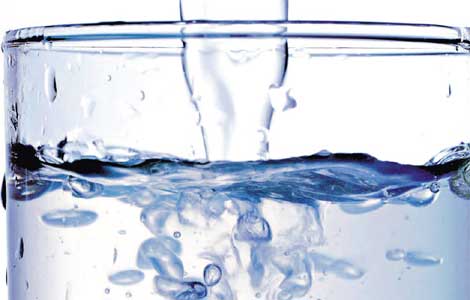

The ISS crew might have to wait a while before waste water is purified.
[/caption]The system has only just been installed and it is already broken down. Unfortunately, the crew of the International Space Station (ISS) don’t have the luxury of returning their faulty urine recycling system to the store to replace it with a new one.
The $154 million recycler was started up just as Thursday’s space walk was ending, but it suddenly shut down for an unknown reason. Today (Friday), the crew re-started the device, only for a sensor to alert NASA that one of the motors inside was not working. NASA engineers are now working hard to establish whether this revolutionary machine has a simple glitch, or whether the motor needs to be replaced. Either way, an answer needs to be found within the next week, as a sample of recycled water needs to be transported on board Shuttle Endeavour when it returns to Earth so it can be tested…
There are currently 10 crewmembers on the ISS, working on the home improvement STS-126 mission launched by Shuttle Endeavour. STS-126 carried the much-publicised urine recycling system, a (much needed) new toilet, a new kitchen and more crew accommodation. This is all in preparation for next year’s crew expansion plans, boosting the continuous presence from three to six astronauts and cosmonauts. The increased temporary crew presence on the space station has meant the orbital outpost is a hive of activity. The ISS has even had its orbit re-boosted by the attached Endeavour, pushing the station one mile higher. On Saturday, the crew will carry out their third spacewalk of the mission.
So what has gone wrong with the waste water recycler? Unfortunately, NASA does not know, but they are on a time-crunch to get the equipment working. Endeavour is set to return to Earth on Thanksgiving (November 27th), but STS-126 commander Christopher Ferguson has said he’d be willing to modify the schedule to allow more time to get the water purifier working.
NASA engineers are working around the clock to root out the recycler problem, but so far the sensors indicate there is a fault with one of the motors. Therefore, the problem is either with the sensor itself (in which case a method will be needed to bypass it) or the motor will need to be replaced by a later shuttle mission.
The urine recycler has been under development since the 1980’s and Bob Bagdigian, project manager at Marshall Space Flight Center, has been working on the project continuously. Bagdigian even cheered the launch of Endeavour with some recycled water from the urine and sweat of Marshall employees used to test prototypes in the laboratory. The water was a 2005 vintage. Apparently the water tastes fine… just like water. That’s because it is water (purified through distillation and filtration processes).
Let’s just hope NASA works out the recycler problems within the week so the ISS crew can send that sample back to Earth for tests.
This is a prime example of how advancing our ability to live in space can affect how we live on Earth. The urine recycler is basically a miniaturized version of water treatment plants. This technology has potential spin-off applications for mobile water purification methods in poor water quality regions in draught-stricken countries.
“This technology of how to reuse our things and be careful with them is really applicable to life on planet Earth,” space station commander Mike Fincke added.
Source: Chron.com
Could a new, fifth force of nature provide some answers to our biggest questions about…
In 2015, the United Nations adopted the 2030 Agenda for Sustainable Development—the Sustainable Development Goals…
Astronomers have been battling threats to their clear skies on all fronts lately. One of…
If you were Captain of the first USS Enterprise, where would you go!? Humanity is…
Now is the best time to observe Mars in 2025. Mars from 2014. Credit: Paul…
Scheduled for launch in 2027, the Nancy Grace Roman Telescope is slowly being readied for…